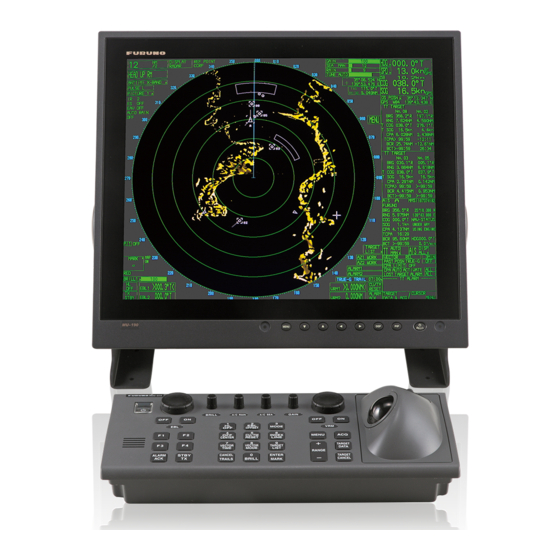Advertisement
TUNING THE FAR2137S/12 RADAR FOR BIRD DETECTION
While the larger, 60KW FAR2167DS radar is designed specifically as a "bird radar",
the 30KW FAR2137S absolutely detects birds. On large tuna super seiners (250‐300
foot vessels) from Spain, South America and Asia, most use a couple of 60kW S‐
band radars for long range bird detection and in addition some use one 30kW S for
short range bird detection.
The 60kW S‐Band normally are installed on top of the mast and approximate
detection range is around 12‐14nm. The max detection range is around 18nm.
Because large seiners usually use the 60KW radars with high gain to get even small
target (flock) detection, they have a lot of sea clutter and the screen is very noisy,
especially on short range, so they use 30kW S for short range bird detection. The
30KW normally is installed at the very front end of the top deck or on top of the
wheelhouse (a lower location than 60kW S). This location is almost the same height
as the mast location on smaller fishing vessels of 80‐100 feet or so. The detection
range of FAR2137S is usually up to around 8nm. The max detection range normally
seen is 12nm. The following are the recommended settings to get started with
detection on the Furuno FAR2137S:
1. Turn the radar on while away from pier walls, buildings and other sources of
physical blockage of the radar beam. Transmit the radar for 10‐15 minutes
before making adjustments so that the magnetron comes to a stable working
voltage and temperature. For best results, do NOT make these adjustments
in port!
2. Set the range at 8nm and off‐center (The Off‐Center button puts the vessel
in the bottom of the screen). 8nm range setting is optimal to get the best
effect of the echo zoom. If you set range longer than 8nm, bird echoes get
small and are not easily visible.
3. Turn Auto A/C "Off"
4. Set pulse length to the maximum ("LONG").
5. Set interference rejection to "1" or lower.
6. Set echo stretch to "2".
7. Set echo average to "2".
Advertisement
Table of Contents

Subscribe to Our Youtube Channel
Summary of Contents for Furuno FAR2137S/12
- Page 1 TUNING THE FAR2137S/12 RADAR FOR BIRD DETECTION While the larger, 60KW FAR2167DS radar is designed specifically as a “bird radar”, the 30KW FAR2137S absolutely detects birds. On large tuna super seiners (250‐300 foot vessels) from Spain, South America and Asia, most use a couple of 60kW S‐ band radars for long range bird detection and in addition some use one 30kW S for short range bird detection. The 60kW S‐Band normally are installed on top of the mast and approximate detection range is around 12‐14nm. The max detection range is around 18nm. Because large seiners usually use the 60KW radars with high gain to get even small target (flock) detection, they have a lot of sea clutter and the screen is very noisy, especially on short range, so they use 30kW S for short range bird detection. The 30KW normally is installed at the very front end of the top deck or on top of the wheelhouse (a lower location than 60kW S). This location is almost the same height as the mast location on smaller fishing vessels of 80‐100 feet or so. The detection range of FAR2137S is usually up to around 8nm. The max detection range normally seen is 12nm. The following are the recommended settings to get started with ...
- Page 2 From a long‐time Furuno USA tech who is very familiar with these radars – thousands of hours of screen time: “The Japanese and Spanish have different ideas on several of the settings for bird detection. If anyone is not happy with bird detection it is more likely a setup issue than a radar performance issue.
- Page 3 “dim” over time. Be sure to keep track of transmit hours, which are shown at startup and when the radar is in stand‐by mode. A radar with many thousands of hours transmitting on an old magnetron will lose target sensitivity over time. When targets go dim, Furuno stocks replacement magnetrons and MIC (Microwave Integrated Circuit) that are normally replaced as a set. We can make a lot of old radars like new or pretty close to it. ...














Need help?
Do you have a question about the FAR2137S/12 and is the answer not in the manual?
Questions and answers